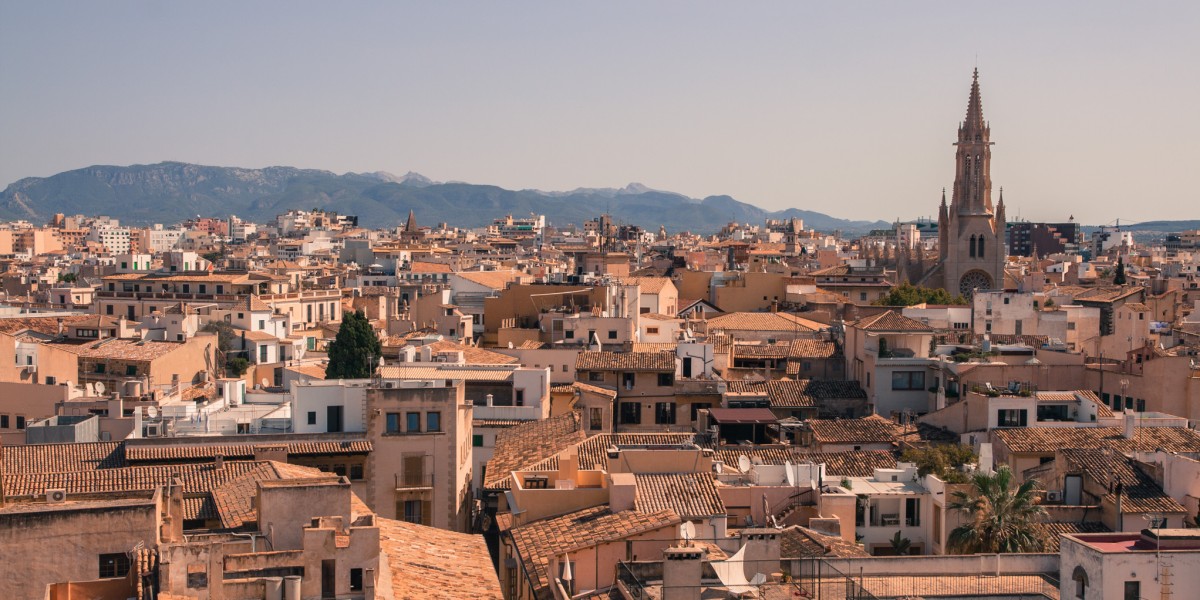
Palma’s the sort of place that sneaks up on you—in the best way. One minute you’re weaving through stone alleyways past postcard-perfect patios, the next you’re having a coffee in a sunny square, eavesdropping on half a dozen languages. Living in Palma de Mallorca isn’t just about the beaches (though those turquoise coves do try to steal the show); it’s a mash-up of weekly markets, scooters dodging old ladies, tapas with friends, and more than a few midweek “should I swim or siesta?” dilemmas.
Is Palma a good place to live?
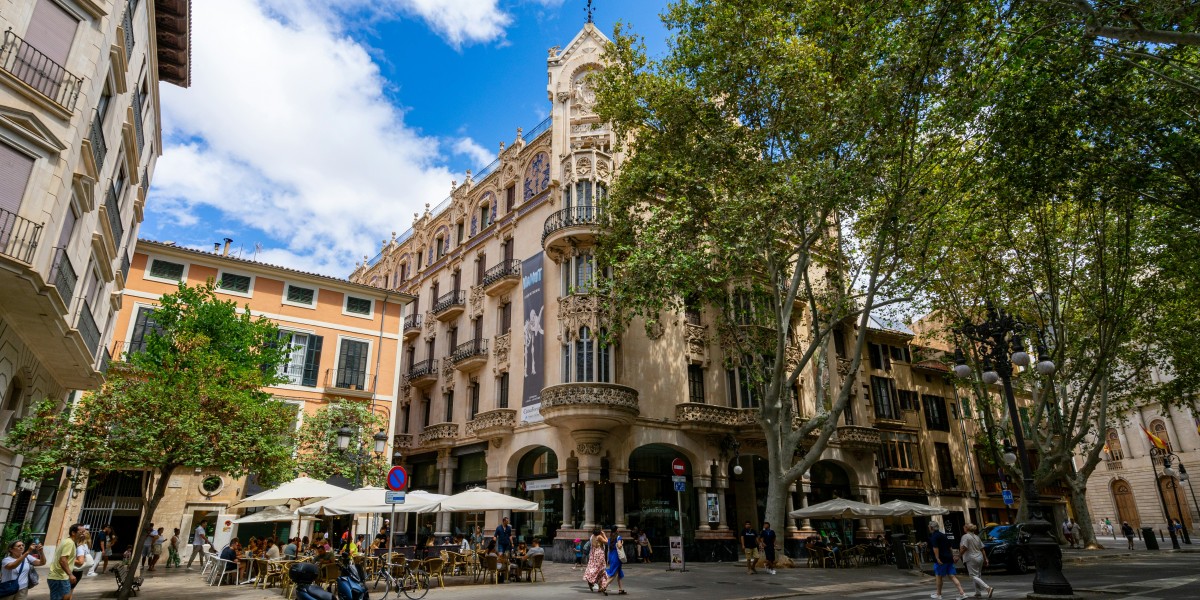
The capital of the island of Mallorca, Palma, is easy to fall for—there’s sea air, café tables spilling out onto the pavements year-round, and enough city energy that you don’t feel marooned on an island.
Palma has a population of over 400,000, so you can walk or hop on a bike pretty much everywhere in the city centre. Plus, the airport’s close enough that you can get to London or Berlin for a weekend. There’s a big international community, but the local rhythms are still strong—siesta isn’t just some Instagram myth, and don’t expect anything open on a Sunday apart from the odd bakery and the beach.
Work can be a bit seasonal unless you’re remote or lucky, and finding a flat in the centre takes patience (and sometimes deep pockets). Still, most people who stay reckon the trade-offs are worth it—good Balearic food, friendly faces, blue skies.
Is Palma de Mallorca expensive to live?
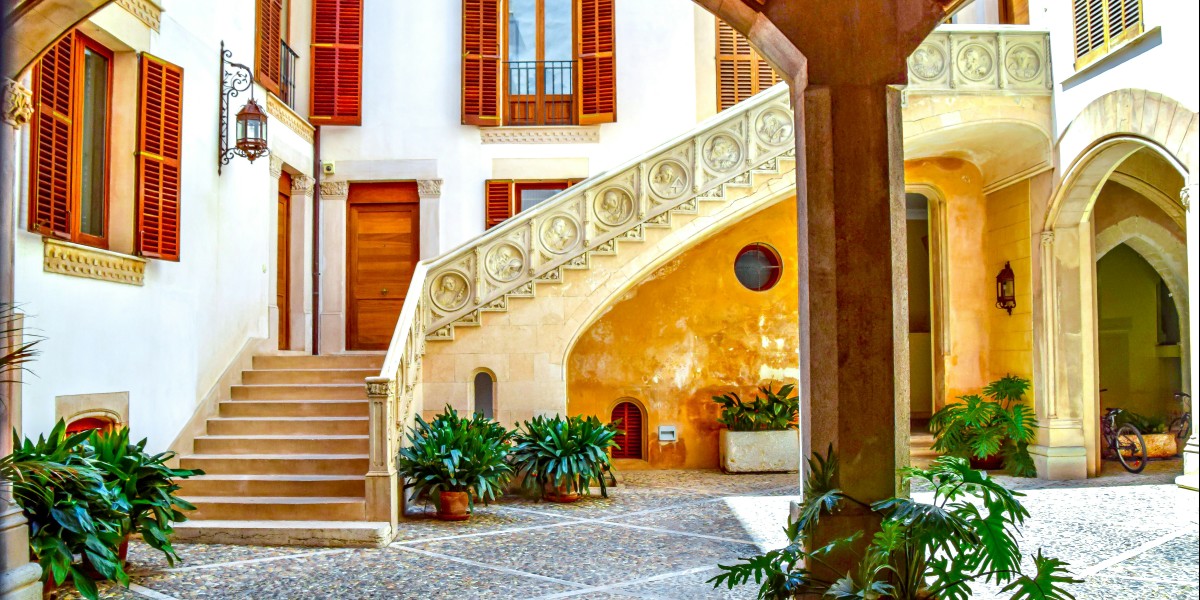
Palma isn’t a bargain, but it’s not quite London or Paris either. According to Numbeo, eating out can add up—expect to pay about €15 for a basic meal in a no-frills restaurant, or €60 for a dinner for two somewhere with tablecloths. A local beer tends to be €4 in most bars, and a coffee in a café hovers around €3. If you’re doing your own shopping, a loaf of decent white bread costs about €1.20. Public transport is practical and at €2 a bus journey, or free if you’re a resident with a local card. Monthly gym memberships run around €50, and average basic utilities for a good-sized flat are roughly €200.
Housing is the big one. As of August 2025, property prices in Palma averaged around €5,006 per m². Rent prices sat at about €18.0 per m², so for a typical 80m² apartment, you’re looking at around €1,440 a month.
Meanwhile, if you wander over to other parts of the Balearics, Eivissa (Ibiza Town) is the absolute priciest for rentals—think €30.5 per m²—while the highest property prices are up in Sant Joan de Labritja (€8,959 per m²), and Formentera is not far behind at €8,873 per m².
Pros and cons of living in Palma
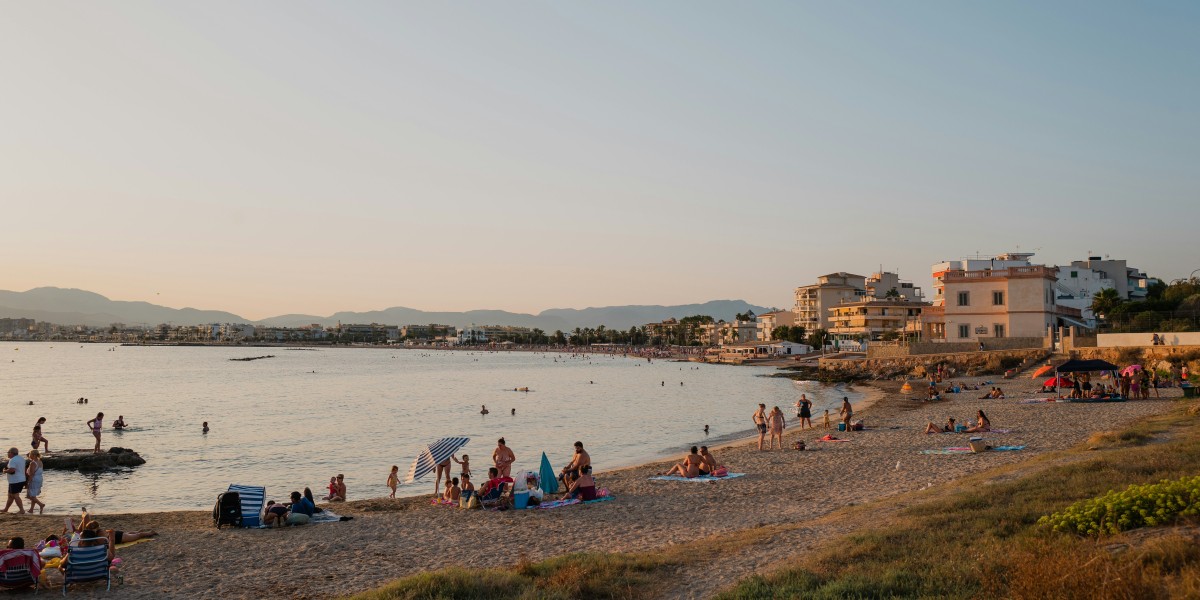
Living in Palma comes with its fair share of perks and quirks, and most newcomers find themselves weighing up the good against the frustrating in their first few months.
Some of the pros of life in Palma include:
- The ability to stroll down to the sea to one of the best beaches in Mallorca for an early morning dip or an after-work catch-up with friends along the promenade.
- A genuinely welcoming expat and local community, with everything from language swaps in small cafés to open-air concerts at the park.
- Great food markets and bakeries—ensaimadas are a local favourite—and a patchwork of lively barrios, each with its own character.
A couple of downsides to keep in mind:
- The housing hunt is a headache—places go quickly and rents aren’t exactly low, especially in Santa Catalina or anywhere near the old town.
- Things slow down in the off-season: shops close, the city feels quieter, and you might need to adjust to the more laid-back winter pace.
Where to live in Palma de Mallorca (best areas & neighbourhoods)
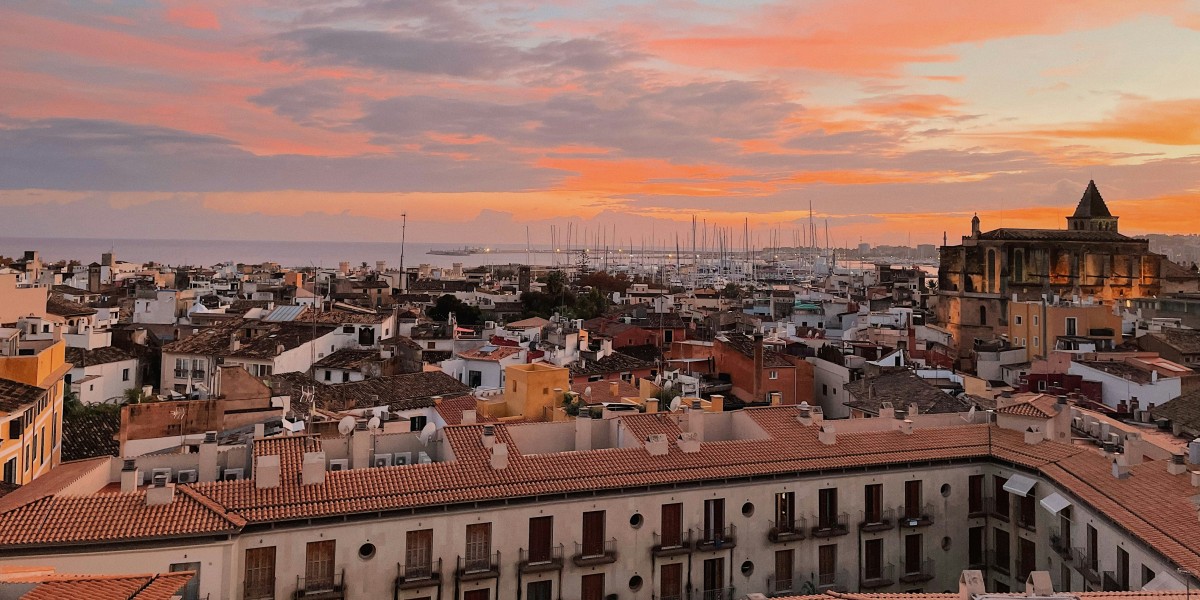
Picking a neighbourhood in Palma depends a lot on your vibe and budget. Some places are all leafy streets and brunch spots, while others are proper local and keep your wallet happier.
Santa Catalina
A classic expat haunt, this is Palma’s version of the “cool” neighbourhood, full of Scandinavian bakeries, craft beer bars, and the brilliant Mercat de Santa Catalina. It’s busy, colourful, and only a wander from the marina, but it does come with a matching price tag.
Old Town (La Seu, Calatrava, Sa Gerreria)
This is postcard Palma—winding medieval lanes, sun-baked squares, and those terracotta rooftops you see in every holiday snap. Living here means history at your doorstep, pintxos bars around every corner, and you’re never far from the buzz of Passeig del Born.
El Terreno
Traditionally bohemian, lately attracting a mix of artists, expats, and young families. There’s a slightly scruffy edge, but plenty of character. Plus, you’re walking distance from both the city centre and Bellver Forest if you need a bit of green.
Portixol & Molinar
Seaside living with a relaxed feel, ideal if you’re after evening strolls by the water and a string of no-fuss seafood places. It’s still close enough to bike into the centre but swaps busy streets for sea breezes and sun-bleached houses. Very popular with German, British, and Scandinavian expats.
Son Armadams & Bonanova
Leafy, residential, and quieter, these neighbourhoods are safe bets for families or anyone after bigger flats and a bit of breathing space. There are small shops, parks, and you’re just a short jaunt from all the action.
Son Vida
If you’ve got a healthy budget, Son Vida is where Mallorca’s seriously minted set—think footballers, CEOs, and the odd European royal—hole up. Gated villas, golf courses, and views for days. You pay through the nose, but you do get lots of privacy and the poshest postcodes.
Rafal - Son Forteza
One for the budget-conscious. It doesn’t have the glitz or “I’ve landed” vibe of Son Vida, but for affordable rents and a more local Mallorcan feel, it’s hard to beat. This is everyday Palma: busy streets, schools, bakeries, and markets—the basics, but all the essentials are covered.
Living in Palma as a foreigner

Living in Palma as a foreigner means joining a city where international faces are baked into daily life. You’ll bump into Brits, Germans, and Scandinavians (plus the occasional Canadian) all blending their quirks with Mallorcan routines. In Santa Catalina, you’re just as likely to overhear talk about sourdough or missing cheddar as you are about the local sobrasada.
The draw? It’s that rare mix of easygoing island rhythm and proper city energy. Expats aren’t just lingering tourists; they’re after slower mornings, sea air, and enough café buzz (and decent Wi-Fi) to keep things interesting.
Is English spoken in Palma?
English gets you far in central Palma, especially around Santa Catalina and the old town, or anywhere packed with estate agents, international schools, or cafés by the marina. Most staff are used to English speakers, but stray further out or try your luck at the town hall and you’ll want to brush up on your Spanish—or even a few words of mallorquín.
Living in Palma as an American
Americans aren’t as common as Brits or Germans here, but you’ll spot them—often meeting up via international schools, expat groups, or at the occasional US-style café. Life’s cosy enough, with English-language films and some familiar groceries, though paperwork, insurance, and bank accounts can trip you up. Best come armed with patience for getting residency and other processes, as well as an appetite for something a bit different than back home.
Digital nomads in Palma
With reliable Wi-Fi, co-working spots, and a good mix of cafes and sun, Spain in general has made a name for itself among digital nomads. And Palma’s no stranger to remote workers. In fact, the city ranks among the world's top cities for executive nomads according to Savills' 2025 Nomad Index.
Living like a local
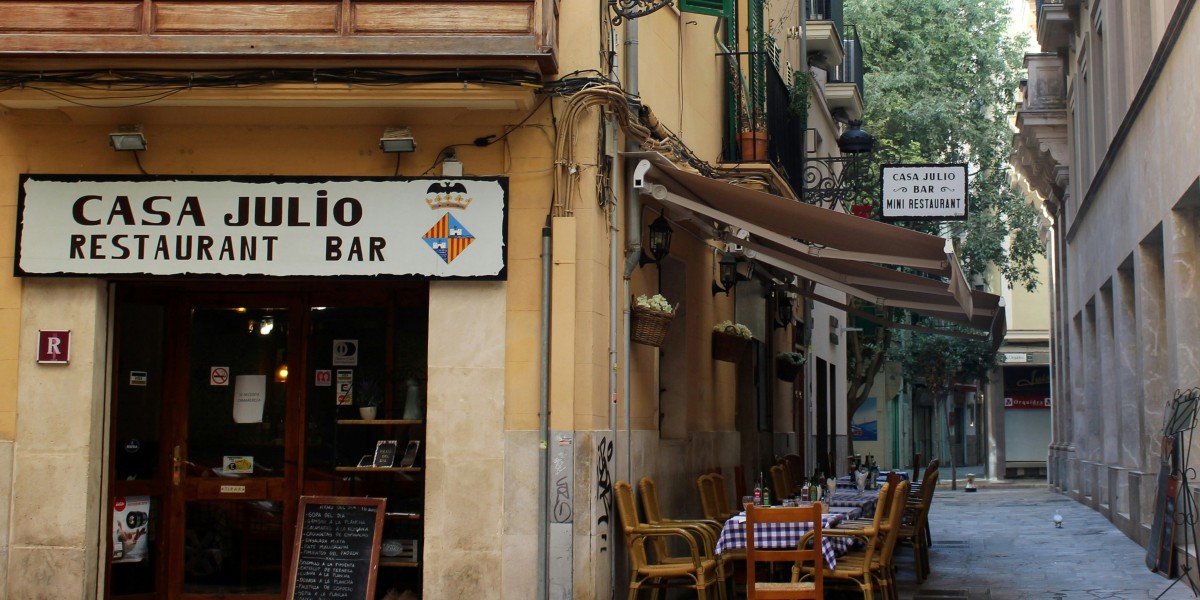
Slotting into daily life in Palma means picking up the little routines and local quirks that, before long, just feel normal. Mornings might start with a quick swim at Can Pere Antoni, sharing the water with a few regulars and the odd brave soul year-round. Sharpen your elbows for the market—whether it’s Mercat de l’Olivar or the bustle in Santa Catalina—where you’ll end up buying way more oranges or olives than you meant to.
The pace here isn’t frantic. You’ll get used to slow strolls along narrow streets and bumping into friends in funny corners of the city. Evenings might be a round of drinks at a tiny bar tucked off a back street, picking at local pa amb oli or whatever the barman’s whipped up that night. The weekends often mean a walk or cycle along the seafront, tucking into fresh pastry from Fornet de la Soca or just soaking up the street life on a shaded bench.

Stay in the know about living in Spain as a foreigner—get our weekly newsletter for the latest travel, legal, and lifestyle news.
For a taste of the high life, sign up for the monthly luxury market round-up.
